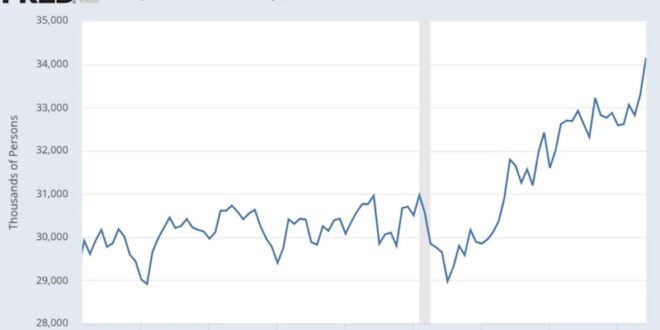Despite the many economic challenges people are facing today, including stubbornly high inflation and 401ks that are still reeling from the worst stock market drop since 2008 , many contend that we’re witnessing the triumph of “Bidenomics.”
The White House has been touting statistics showing 13.2 million jobs have been created during the Biden administration and that the unemployment rate fell to 3.6% in June. Not bad, right?
At least some seem to think so.
“America under President Biden has better employment numbers … than the America of 1984 when President Reagan ran morning in America ads touting the economy,” said Matthew Dowd, a former political strategist for George W. Bush and MSNBC.
The thing about statistics is they can be deceiving — “Lies, damned lies, and statistics,” to paraphrase the British statesman Benjamin Disraeli.
A closer look at government data reveals the labor participation rate, which has been declining for decades, is at its lowest in the last 45 years if you exclude the pandemic (more on why in a minute).
How do these data mesh with the White House’s figures, which show 13 million added jobs and an employment rate of 3.6%? The answer is surprisingly simple.
Government data show there has been considerable job growth since early 2020 , with 130 million total jobs in April 2020 to 156 million in June 2023, but almost all of that job growth involved replacing jobs that were erased during the COVID-19 pandemic (there were 152 million total non-farm jobs prior to lockdowns).
In other words, Biden is taking credit for jobs that are primarily returning after huge swathes of the economy were shut down.
But as noted, labor participation remains significantly lower than it was prior to the pandemic.
There are a multitude of reasons more people are choosing not to work. More families homeschooling, a trend that took off during the pandemic, is likely one reason. Lower (real) wages may be another factor. Perhaps some workers are refusing to return to the workforce because they don’t want to get vaccinated or wear a mask (as some businesses still require). There are government-created poverty traps , which occur when poor workers lose support payments when they earn more income, which can discourage work. And of course more working-age people are able to retire early.
All of these factors likely played a role (big or small) in the weakened labor participation, but we have clear data on one front that sheds light on the matter.
“Disability claims [are] soaring,” economist Peter St. Onge recently tweeted . “A big part of that impressive unemployment rate: if you’re living on disability, you’re no longer counted.”
St. Onge was referring to Federal Reserve data showing that disability claims, which remained flat between 2014 and 2020, began to skyrocket in 2021.
In January 2021, there were 29,851,000 disability claims. By June 2023, that figure had reached 34,152,000 — an increase of 15% in just 30 months, the fastest increase on record. (Data go back to 2008.)
There are undoubtedly various reasons disability claims are surging, but the biggest one might be related to “long COVID” (COVID symptoms that continue or develop long after initial infection).
“The bottom line is that long COVID is why the labor force participation rate has not recovered to pre-pandemic levels, even in a situation with solid wage growth,” Torsten Slok, the chief economist and partner at Apollo Global Management, wrote in a note earlier this year.
Can workers even collect disability for long COVID? Apparently so, and reports suggest the Biden administration has been working to make it easier to do.
“The Biden administration has already taken some steps to try to protect workers and keep them on the job, issuing guidance that makes clear that long COVID can be a disability and relevant laws would apply,” MPR News reported in 2022.
Now, many may contend that it’s the government’s job to provide assistance for workers who are considered disabled. But as the economist Murray Rothbard once noted , “It is easy to be conspicuously ‘compassionate’ if others are being forced to pay the cost.”
Whether one supports the payments or not, it’s clear that the job triumphs of “Bidenomics” are smoke and mirrors. Fewer people working and more collecting disability is hardly an economic triumph — even if it makes the unemployment rate look smaller.
 Eurasia Press & News
Eurasia Press & News


